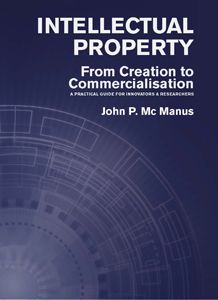Technology evaluation8 September 2016 | Admin Whether you have developed a new technology yourself or are contemplating the acquisition or licensing of a piece of IP that may have some commercial benefit to your company, you need an evaluation process to establish whether the technology and the IPR supporting it really can form the basis of a unique and viable business opportunity. Ideally, an evaluation is performed at four separate levels:
The commercial evaluation is explored in more detail in the business plan section later, but the main focus of attention should be on:
The IP evaluation has been covered in sufficient detail in Chapter 16 to provide the knowledge needed to perform this evaluation and to help form an opinion on the integrity, strength and value of the IP. The financial evaluation must examine the costs involved in developing the technology further to the stage of commercial readiness, whether that is as an end product, the implementation of a process for use in a manufacturing environment, or the application of the technology in a form that can be used to provide a service. For someone considering the licensing or acquisition of the IP to exploit the technology, a further assessment of the costs is required as follows:
Further aspects of the financial requirements are covered in the business plan later; the technology evaluation is the focus of attention now. The objective is to validate the technology by assessing the current status in terms of its ability to deliver the product or process you intend to commercialise and how it compares to other technologies in the marketplace. If it is an unproven technology, then taking it to the stage of market readiness is the greatest challenge faced by the developers so far. Substantial work must be done to develop close-to-market products or processes, so that a proper evaluation on all four levels mentioned above can be performed. The work required to take a technology to market-readiness often goes way beyond the domain of normal academic research activities, as the nature of such work is focused on issues of product or process robustness, reproducibility, manufacturability and compliance with industry and regulatory standards. Such work typically does not provide a researcher with valuable material to support high-quality journal publications. University researchers who are interested in out-licensing a technology or setting up a company to exploit their invention thus need to examine ways to handle these issues and perhaps consider recruiting external resources to take on the down-stream commercial development tasks – for example, specialist on-campus technology centres and service units, outside consultants, commercial designers, suppliers, service providers and contract manufacturers. Extracted from INTELLECTUAL PROPERTY: FROM CREATION TO COMMERCIALISATION: A PRACTICAL GUIDE FOR INNOVATORS & RESEARCHERS by John P Mac Manus. |
|

